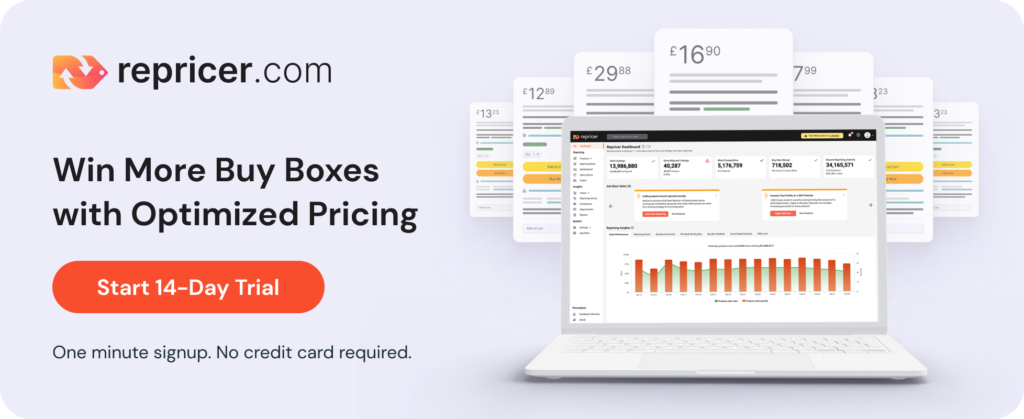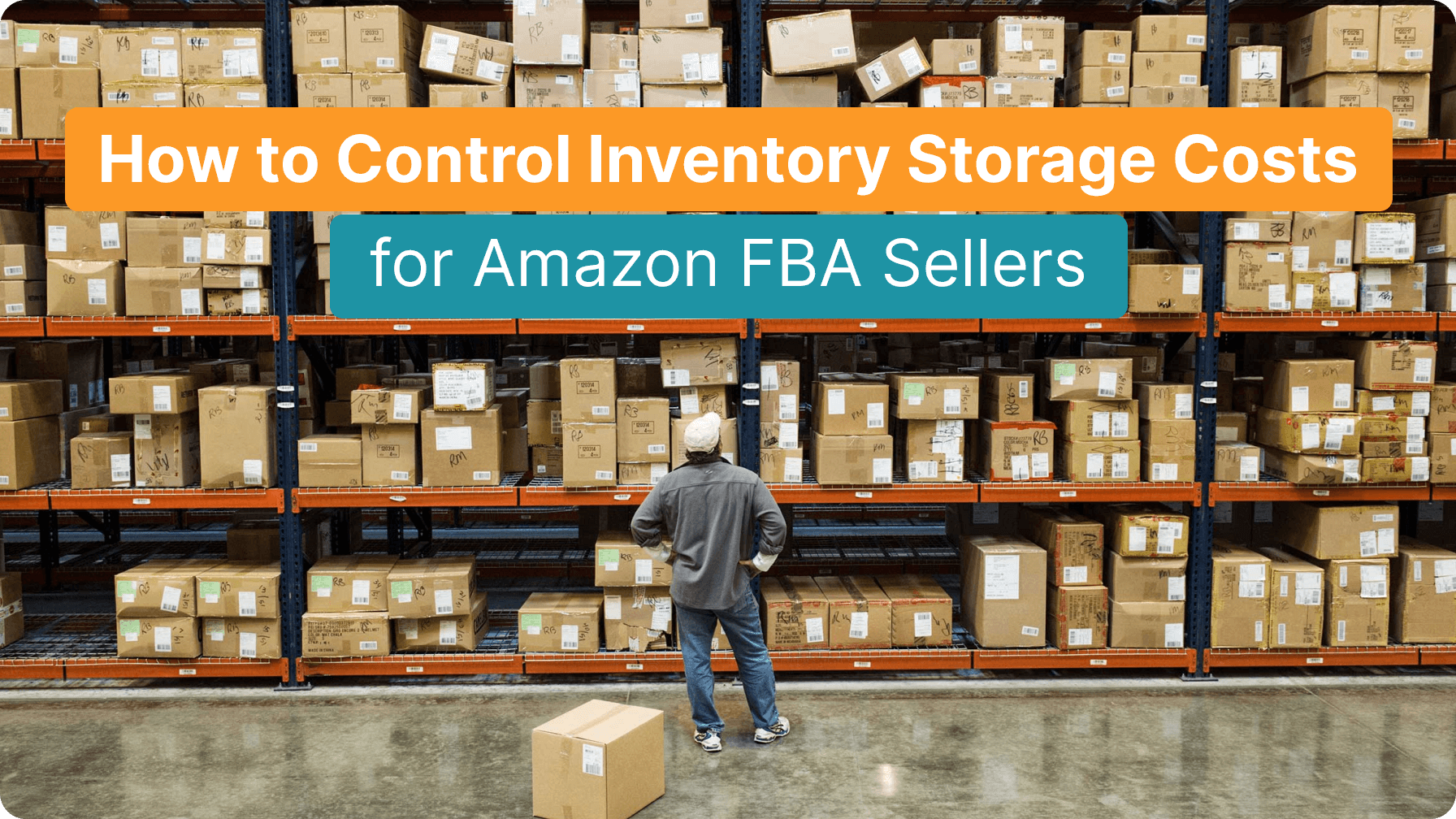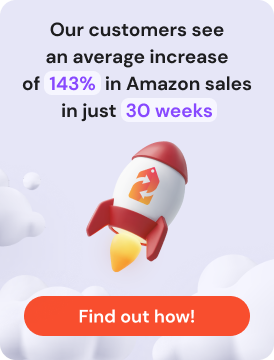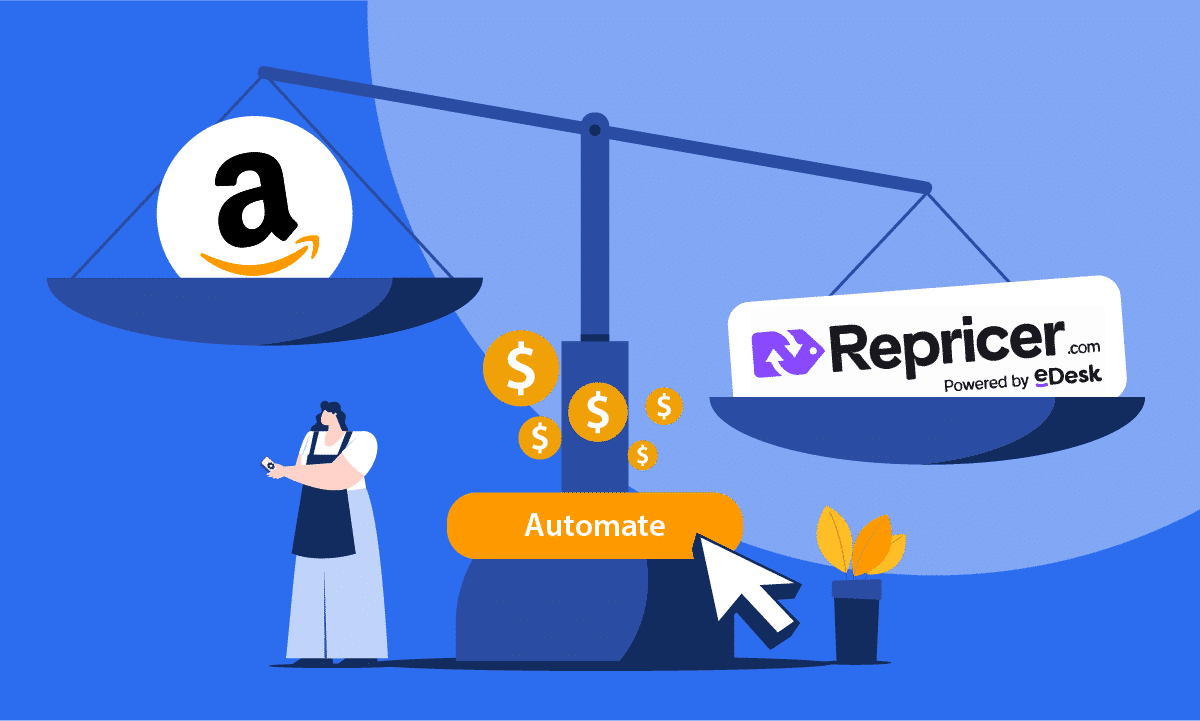If you’re an Amazon seller, you may want to consider participating in Amazon’s FBA programme. FBA stands for ‘fulfilled by Amazon’, and in a nutshell, it means that you don’t have to carry your own stock.
Instead, you keep your stock in one of Amazon’s fulfilment centres, and whenever someone buys a product from you on Amazon, that product will be picked, packed and shipped directly from an Amazon warehouse.
Sounds convenient, doesn’t it? It absolutely is, but more than that, being an Amazon FBA seller has numerous other benefits. Here, we’ll go through all of those benefits and discuss the important matter of inventory storage costs.
Not having to store inventory is a wonderful thing for Amazon sellers, but it’s important to be smart about storage so that you don’t incur too many costly storage fees. Being strategic about how you approach your storage costs – including building it into your pricing and taking advantage of promotions – can help you avoid unnecessary expenses while growing your business as an Amazon FBA seller.
Read on to find out how you can practice our helpful tips to help you maximise your business as an Amazon FBA seller.
Why it Pays to be an Amazon FBA Seller
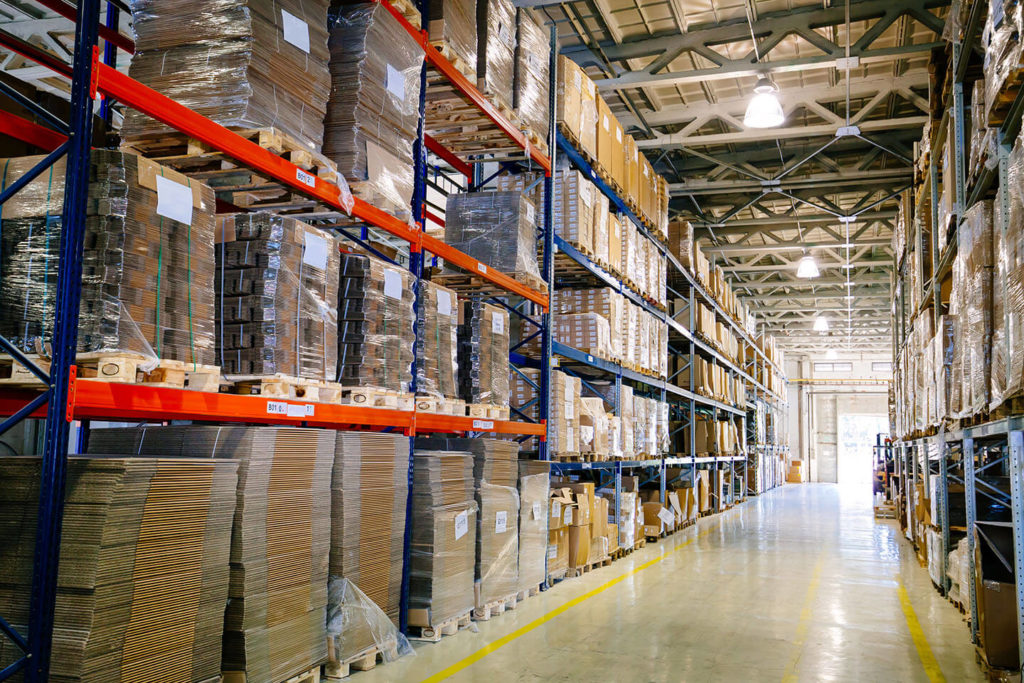
There are many benefits to being an Amazon FBA seller. For starters, you needn’t worry about storing stock or order fulfilment. Amazon takes care of all of that for you by storing your items and then dealing with your items’ picking, packaging, and shipping.
In addition, sellers who use Amazon FBA have their orders prioritised. Amazon considers FBA sellers first when deciding who to award the Buy Box to. All sellers want to win the Buy Box because it makes it more likely that a customer will choose your product over your competitor’s. In fact, more than 83% of all Amazon sales come from the Buy Box.
In addition, if you’re an FBA seller, your products are eligible for Amazon Prime, leading to increased sales. According to Amazon, its selling partners see a sales uplift of 35% when moving their products to FBA.
Sellers who opt to use Amazon FBA enjoy all of these benefits, but they must also be aware of some responsibilities that come with being part of the FBA programme, namely costs associated with the programme that centre around storage fees.
Joining FBA is recommended, but you must have a strategy to deal with the inventory storage fees so that you don’t compromise your profit.
Understanding Amazon Inventory Storage Fees
Amazon charges storage fees on the inventory it holds for sellers participating in the FBA programme. How they calculate these fees depends on several factors:
- The space occupied by the items you are storing (measured in cubic feet)
- The length of time the items are held in the warehouse
The storage fees are increased during busy seasonal shopping periods (typically Q4 during the festive season). In addition, large items that tend to require extended warehousing periods will incur higher costs in the form of long-term storage fees.
This incentivises sellers to keep fast-selling stock and move their stock quickly through creative marketing and other business decisions. Storing rare, large, or rarely-purchased items is less financially advantageous for FBA sellers than smaller, in-demand items that can be sold quickly.
Amazon also operates using a ‘first-in-first-out’ (FIFO) inventory system, which considers the oldest items to be purchased first. This can be helpful because you retain original storage fees on the first batch of items until they are all sold, even when you replenish stock of that exact item.
Amazon Inventory Storage Fees Are Billed Monthly
It is essential to understand that Amazon bills FBA sellers for their storage fees monthly, billing between the 7th and 15th day of each month. Sellers need to be aware of this billing cycle to regulate their cash flow appropriately to cover these fees.
Fees will vary depending on item size and the time of year. The items are classed as ‘standard size’ or ‘oversize’ and will be billed at a different rate from January-September than they are from October-December of each year.
FBA Storage for Dangerous Goods
If you are selling goods deemed to be ‘dangerous goods’, the fees will also be higher since they require additional storage. Typically, dangerous goods include substances or materials that require extra care when storing, handling and transportation because they may be flammable, pressurised or contain other harmful materials.
Dangerous goods, to some extent, are obvious in that they include spray paints, lighter fluid, or household cleaners. But they can also be less obvious in that they also include items that don’t appear dangerous, such as laptops, smartphones or cosmetics.
Items classed as ‘dangerous goods’ all have components or materials that require special storage to reduce the risk of flammability, corrosion, contamination, or other issues. Amazon provides a full list of the items it classifies as dangerous goods.
For such items, Amazon offers a ‘Dangerous Goods Programme’ that allows you to sell these items through FBA, but the storage fees for these products will be priced higher than regular FBA items.
Long-Term Inventory Storage
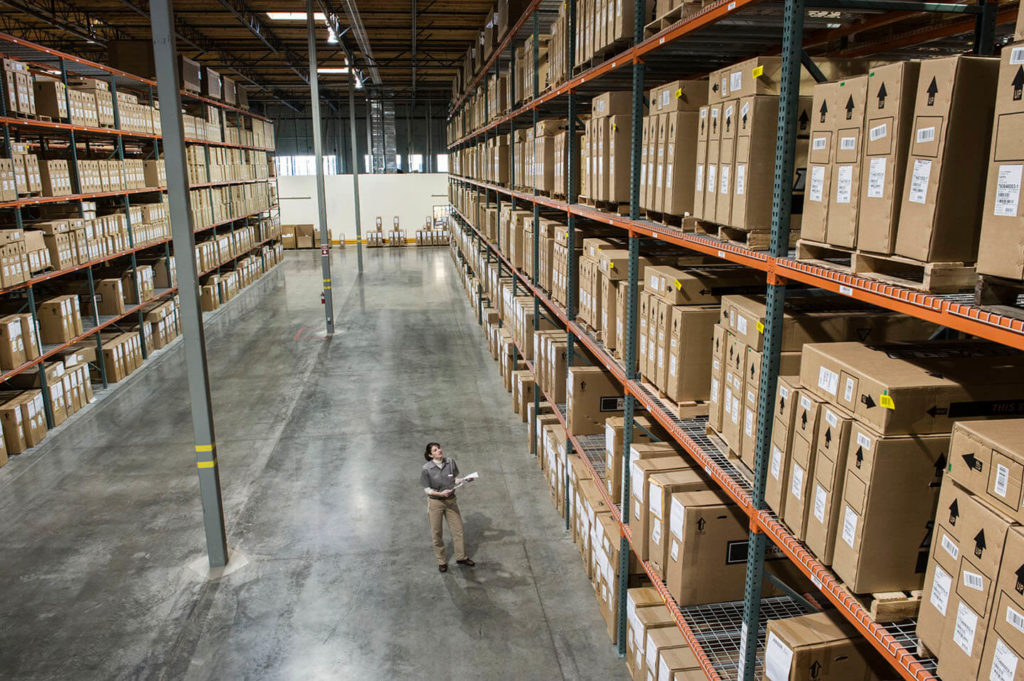
When it comes to items that may need to be stored for longer periods, Amazon will levy long-term storage fees.
In particular, items stored at Amazon fulfilment centres for more than one year (365 days) will have to pay a long-term storage fee and the monthly inventory storage fee for that item.
Amazon outlines its long-term storage fees and policies so that they are upfront with all FBA sellers.
Long-term storage fees can be a bugbear for Amazon FBA sellers, as they can eat into profit margins. The best way to avoid these fees is to prevent them from the outset. You can take strategies and practical tactics to do this, and we’ve outlined these below.
Managing Amazon Inventory Storage Fees
The cost of inventory storage can add up if not managed carefully.
As an Amazon FBA seller, you must be strategic about which products you sell, how you sell them, and the tactics you take around moving products so that you do not run the risk of having products sit in your inventory for too long. If your products hang around, the storage fees run the risk of eating into your profit margin!
Before you embark on storing your inventory with Amazon FBA, you should think about how you will manage your inventory. This includes sales tactics to ensure you turnover your stock more efficiently to minimise storage costs and maximise profits.
You’ll need to do some market research, have the know-how and the ability to forward-plan to ensure that you don’t make costly mistakes that will cause unmovable stock to become stored long-term. Below are some steps you can take to get a handle on your inventory and get ahead of any financial threats to your business that arise from long-term inventory management.
7 Tips for Managing Amazon FBA Inventory Storage for Maximum Profitability
The great thing about being an Amazon FBA seller is that you have access to a helpful dashboard in Amazon Seller Central. This dashboard allows you to look at inventory age and health reports so that you can stay on top of how long your inventory has been stored and identify any potential danger zones that are driving up the cost of your inventory storage.
But there’s a lot more you can do than just keep an eye on the age of your inventory! You can take some proactive steps that will help you move your inventory along to maximise profitability.
1. Optimise your pricing strategy
First and foremost, the most strategic thing you can do to avoid languishing inventory is to set the correct prices on all of your inventory.
One of the common reasons for excess inventory that incurs long-term inventory costs is a lack of knowledge about how to price your stock so that it moves at optimal rates. You can improve your sales by improving your pricing – the link between the two is direct!
But how can Amazon sellers improve their pricing? Fortunately, repricing products such as Repricer take the guesswork out of pricing your items. They use intelligent automation to set prices based on market conditions to keep you ahead of your competition.
You never want to be selling at a loss to undercut the competition. Repricer understands this, and that’s why it is purpose-built to allow sellers to set floor prices, as well as setting specific customised rules that offer protection against revenue loss. So you make the sale and stay profitable.
2. Know your inventory turnover rate
How quickly are you turning inventory? You need to have close knowledge of your inventory to ensure that you are keeping proper stock levels.
Your inventory turnover rate will tell you how fast you’re selling your products and help you plan to reorder stock so that you do not over or under-buy for your Amazon store.
3. Stay informed of the supply chain
These days, you can hardly read a news article without hearing about the supply chain and for a good reason! It’s essential to our global economy. Even when the supply chain isn’t experiencing problems, sellers need to stay abreast of what is happening because this will affect the products they can offer, sourced from different suppliers worldwide.
You must understand the lead time of placing an order, when that order will be entered into the Amazon warehouse, and plan your stock ordering accordingly. Having a contingency plan that includes backup stockists can be helpful in case there is a shipping glitch or a natural disaster that delays the supply of a specific product.
4. Use forecasting to help your sales strategy
Being strategic about the items you sell is one of the most valuable things you can do for your business. By forecasting market trends and consumer demand, you can ensure that you offer products that will turnover well and grow your profit pipeline.
One way you can do this is by looking at Amazon’s Best Sellers section to see which items are popular. You can also use trends forecasting to get insights into what the hottest seasonal items are likely to be or upcoming consumer needs that you might be able to fulfil with some planning.
In addition, there are Amazon product research tools available on the market, which will help you build your inventory around the right products that are in demand with consumers.
5. Leverage promotions
If you have items that are looking likely to incur long-term storage fees, you can take some marketing activities to help move them faster. For example, you can use PPC (pay-per-click) ads with promotional call-to-actions (such as special discounts or offers) to raise awareness and encourage consumers to take advantage of the deals.
Alternatively, you can bundle older stock with your best-selling items as a special deal for consumers. This will help you move the older stock before it starts incurring long-term storage fees.
6. Take advantage of Amazon’s free removal promotions
From time to time, Amazon will offer special ‘free removal’ promotions to help FBA sellers remove the items from the fulfilment centre. Remember that you will not be able to send the items back to Amazon for a specified period (typically 90 days).
It’s important to understand the rules around Amazon’s free removal promotions so that you do not get caught out. Yes, they are helpful, but you should try to move your inventory using the strategies above to avoid getting to the point where you have to remove products.
7. Use a Third-Party Logistics (3PL) company designed for FBA sellers
3PLs can offer cost-effective storage and fulfilment services, allowing FBA sellers to avoid the high costs of warehousing and shipping their products themselves. By outsourcing these tasks to a 3PL warehousing fulfilment, you can save money and time while also ensuring that your products are stored and shipped efficiently. Additionally, 3PLs often have advanced technology and systems in place for managing inventory and fulfilling orders, which can further improve the speed and accuracy of fulfilment.
A strategic approach to inventory storage costs
Controlling inventory storage costs will be crucial for most Amazon FBA sellers. However, the bottom line is that you needn’t incur unnecessary charges from long-term storage. If you stay informed, plan ahead and create a strategy, you can ensure that your inventory has a reasonable turnover time and avoids sitting in storage long enough to incur costly fees.
Starting with repricing to maximise your chances of making sales, as well as taking the other tips on board, will help you get a handle on your inventory and grow your business as an Amazon FBA seller.
Reduce your storage costs and move your products quicker by repricing your product catalogue with our 14-day free trial at Repricer.com.
